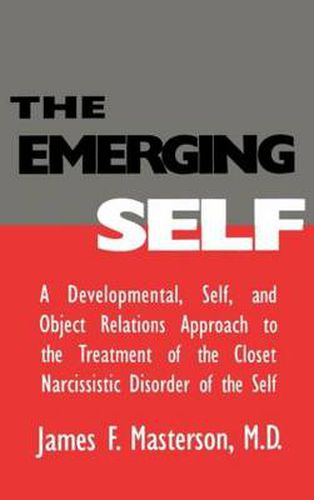Readings Newsletter
Become a Readings Member to make your shopping experience even easier.
Sign in or sign up for free!
You’re not far away from qualifying for FREE standard shipping within Australia
You’ve qualified for FREE standard shipping within Australia
The cart is loading…






This volume aims to shed light on one of the most difficult disorders to diagnose and treat: the closet narcissistic disorder of the self. The third of a series on the disorders of the self, the book fills a niche in the field of personality disorders. It describes not only the psychopathology and treatment of this disorder but, more importantly, demonstrates the key dynamics of the disorders of the self triad: self activation leads to anxiety and depression, which leads to defense. This is the central dynamic of all the disorders of the self, and its particular manifestations in the closet narcissistic personality disorder are described along with the therapeutic techniques required to identify and manage it. The volume also clarifies a great deal of the clinical confusion surrounding the disorder, and addresses such questions as: what does the clinical picture look like? What is the reason for the diagnostic confusion? How does one resolve it? What other disorders does this disorder mimic? How do you differentiate it from the borderline and/or schizoid disorders of the self? What are some possible etiologic factors? What precipitates a clinical syndrome? And what is the intrapsychic structure of this disorder? The book offers a clear and down-to-earth presentation on the subject, and aims to be of interest to all therapists, students, teachers and practitioners, enabling them to identify what emotional issues are on centre stage, understand how to deal with them, and also how to evaluate the results of his or her efforts. Beyond that, it illustrates the variations in countertransference that occur as a result of projective identification.
$9.00 standard shipping within Australia
FREE standard shipping within Australia for orders over $100.00
Express & International shipping calculated at checkout
This volume aims to shed light on one of the most difficult disorders to diagnose and treat: the closet narcissistic disorder of the self. The third of a series on the disorders of the self, the book fills a niche in the field of personality disorders. It describes not only the psychopathology and treatment of this disorder but, more importantly, demonstrates the key dynamics of the disorders of the self triad: self activation leads to anxiety and depression, which leads to defense. This is the central dynamic of all the disorders of the self, and its particular manifestations in the closet narcissistic personality disorder are described along with the therapeutic techniques required to identify and manage it. The volume also clarifies a great deal of the clinical confusion surrounding the disorder, and addresses such questions as: what does the clinical picture look like? What is the reason for the diagnostic confusion? How does one resolve it? What other disorders does this disorder mimic? How do you differentiate it from the borderline and/or schizoid disorders of the self? What are some possible etiologic factors? What precipitates a clinical syndrome? And what is the intrapsychic structure of this disorder? The book offers a clear and down-to-earth presentation on the subject, and aims to be of interest to all therapists, students, teachers and practitioners, enabling them to identify what emotional issues are on centre stage, understand how to deal with them, and also how to evaluate the results of his or her efforts. Beyond that, it illustrates the variations in countertransference that occur as a result of projective identification.